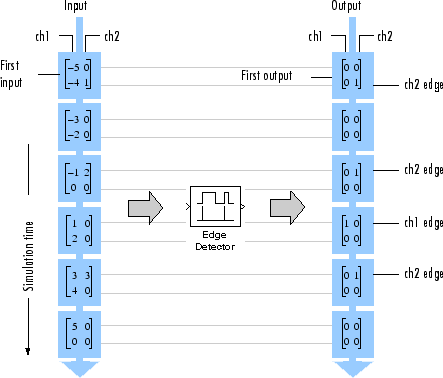Edge Detector
Detect transition from zero to nonzero value
Libraries:
DSP System Toolbox /
Signal Management /
Switches and Counters
Description
The Edge Detector block generates an impulse (the value 1) in a given output channel when the corresponding channel of the input transitions from zero to a nonzero value. When the input does not transition from zero to a nonzero value, the block generates a zero in the corresponding output channel.
This block supports only discrete-time fixed-step signals. Continuous signals are not supported.
The output has the same dimension and sample rate as the input. When you set the
Input processing parameter to Columns as channels
(frame based), the block counts an edge that is split across two
consecutive frames in the frame that contains the nonzero value. For example, if there
is a zero at the bottom of the first frame and a nonzero value at the top of the second
frame, the block counts the edge in the second frame.
Examples
Extended Examples
Ports
Input
Output
Parameters
Block Characteristics
Data Types |
|
Direct Feedthrough |
|
Multidimensional Signals |
|
Variable-Size Signals |
|
Zero-Crossing Detection |
|
Extended Capabilities
Version History
Introduced before R2006a


